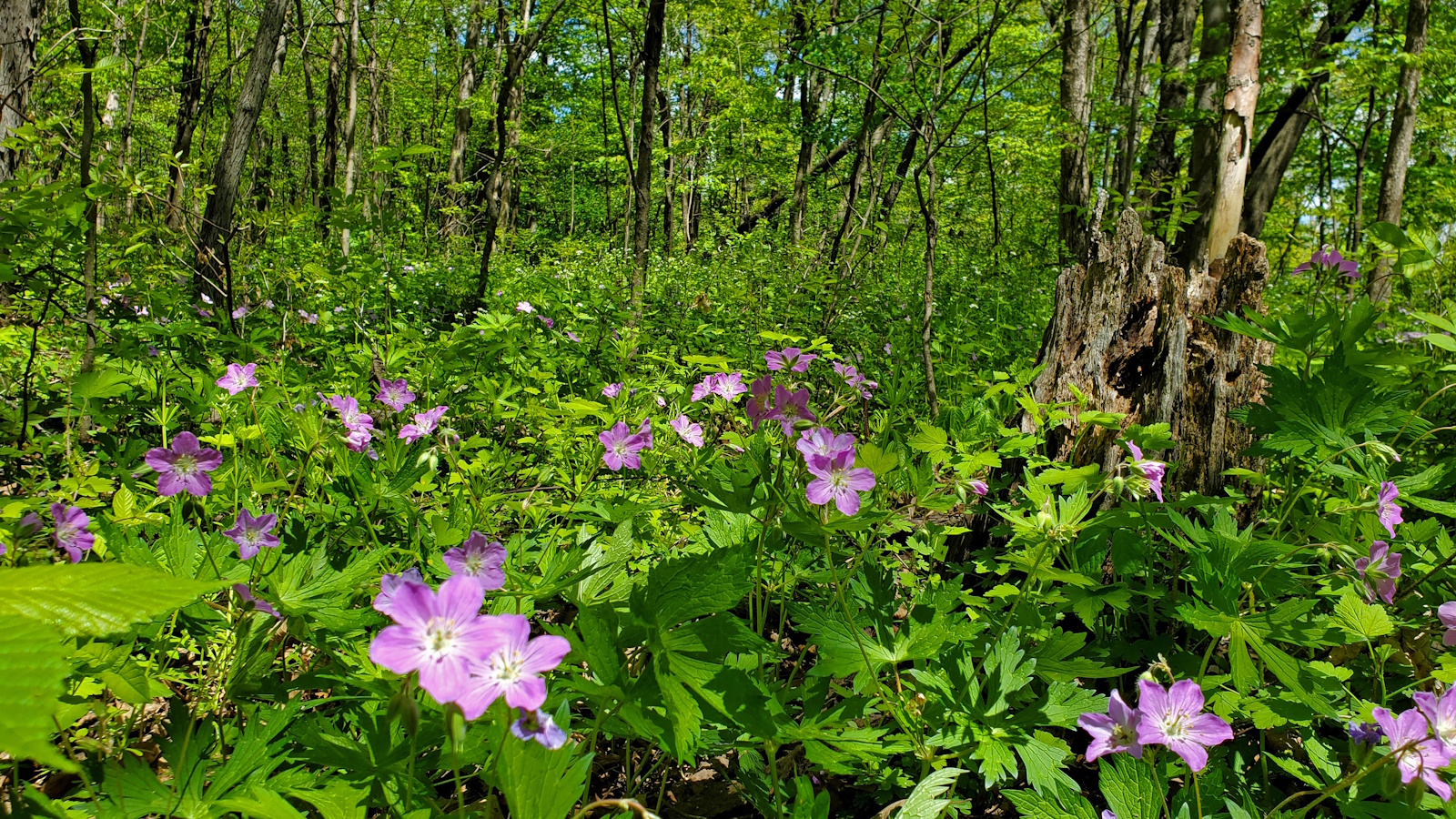Wild geranium is a hardy perennial found growing naturally in the woodlands of North America. If you have a shady yard or dark borders beneath a large tree, this is the plant to grow.Wild geraniums, or Geranium maculatum, produce palmate, divided leaves that form a lush ground cover, punctuated by flowers that open in pale shades.
These hardy, tough and pest-resistant plants are exemplary perennials when it comes to low-maintenance gardening, more than earning their spot in any yard.So, if you are looking for hardy geranium varieties to plant this year, learning how to grow wild geranium is a good idea. Here, one garden expert provides all the information you need to know to ensure these shade-tolerant perennials thrive.

(Image credit: Daniel Borzynski / Alamy)How to grow wild geraniumWild geraniums are some of the best perennials that provide excellent seasonal interest during the spring and summer months. Fortunately for us, learning how to grow wild geranium plants is relatively straightforward, so long as you follow a few simple steps.Growing habits of wild geranium(Image credit: Future/ANNAICK GUITTENY)'Wild geranium is a hardy native plant that can be found growing in woodlands across much of the eastern United States,' says Reese Robbins, garden expert and creator of Just Pure Gardening.
Wild geranium seeds can be ordered online from Amazon.One of the best flowering ground cover plants, wild geranium will add lavender blooms to your garden beds during spring and summer. The best part? They are incredibly low-maintenance and an excellent choice for pollinator-friendly gardens.
'In terms of growing hardy geraniums, this species can be planted down to US hardiness zone 3 through to zone 8, although it is remarkably adaptable to a wide range of climates.'Position them in partial shade to dappled sunlight,' Reese says. 'Wild geranium thrives under trees or along woodland borders, which get morning light and afternoon shade, and its foliage will last until the first frost.
For another striking option, try this vibrant 'Giuseppii' variety, a barbie-pink hardy geranium, that is sure to brighten up dark borders. Seeds are available from Amazon.Care guide for wild geranium(Image credit: Getty Images/Bernard Lynch)Soil: 'For the most part, wild geraniums are easy to grow and fuss-free,' Reese continues.
'Plant them in moist but well-draining soil that is rich in organic matter.' To help keep the soil moist and fertile, mulching is a good idea. Apply a thick two or four-inch layer to your borders each year, using something like this mulch from Jolly Gardener, available to order from Walmart.
Light: Wild geraniums do best in part-shade, where they can enjoy a few hours of gentle sun each morning but are protected from the harsh afternoon sun. In cooler regions, full sun should be tolerable, but in warmer regions, such as zone 8, avoid borders that are too open.Watering: Wild geranium plants do better in soil that is consistently moist but not waterlogged.
'Water regularly during the first season to help the roots establish,' Reese says. 'After that, they will be fairly drought-tolerant and find what moisture they need in the soil.' If your soil is too free-draining, it is a good idea to add plenty of organic matter and mulch to your beds to help with moisture retention.
Fertilizing: In terms of how to fertilize geraniums, Reese advises that it is not really necessary. 'I would avoid feeding hardy geraniums,' he says. 'In general, with regular mulching, they should not need any additional feed.
'Pruning: Deadhead your plants through the spring to encourage repeat blooming. 'After flowering, you can shear back the spent stems to tidy up the plant and encourage a possible second flush of blooms,' Reese says. As a deciduous perennial, the foliage will turn yellow and brown during the fall and winter months.
'You can then cut faded foliage down to the base at any point from November until late winter.'Toxicity: Geranium maculatum has no toxic effects reported, and is not considered toxic to humans or pets.FAQsCan I grow wild geraniums in pots?Yes, Geranium maculatum can be grown in pots.
While they are versatile plants that do well in containers, it is best to avoid growing them on overly sunny patios or south-facing balconies. Position pots in part-shade for the best results, and be sure to water and feed them during the spring and summer months. In larger pots, grow them alongside tall perennial flowers, like purple coneflowers or white delphiniums, for a dramatic floral display.
'Give your wild geranium plants plenty of space when planting them in the ground,' Reese says. 'Position them about 12 to 18 inches apart, to allow for clumping. Over the next few years, these ground cover plants will begin to form dense clumps, which may require lifting and dividing once every three years, to maintain their spread and keep them in good shape.
'For more information, see our guide on how to keep geraniums blooming to get the most out of your perennials this year.Shop gardening accessories Biodegradable Seed Pots These seed-starting strips from Jiffy are biodegradable and, perfect for sowing geranium seeds and planting outside in spring. Organic Potting Mix This all-purpose organic potting mix from Back to the Roots is ideal for growing geraniums from seed or in pots.
Skydeer Gardening Gloves These Women's gardening gloves from Skydeer will keep your hands protected when planting and pruning in your yard..
Environment

How to grow wild geranium – for a hardy flowering perennial that will thrive in shady gardens

This tough perennial is a good option for adding color to darker borders















